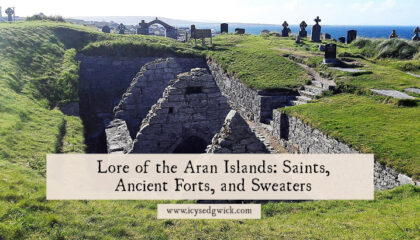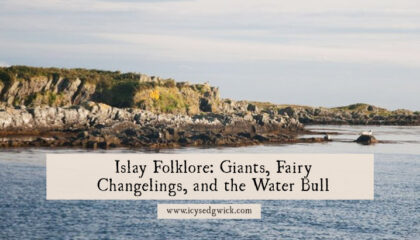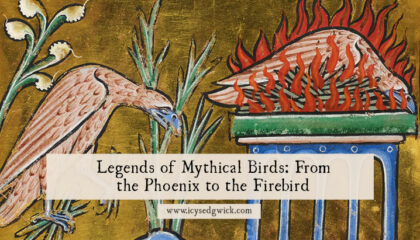We might think of ghost hunts or investigations as a predominantly 20th and 21st-century endeavour. Yet the legend of the ghosts at Willington Mill shows that people were trying to unearth the supernatural even in the first half of the 19th century. Spectral figures and unearthly noises plagued those living at the miller’s house, with […]
Blog
Lore of the Aran Islands: Saints, Ancient Forts, and Sweaters
The Aran Islands lie in Galway Bay off the west coast of Ireland. They’re made up of Inis Mór, Inis Meáin, and Inis Oírr. People have likely lived on the islands since c. 3000 BCE. Late Bronze Age and Iron Age ruins scatter the islands, alongside old churches and holy wells. After the era of […]
Legends of Bardsey Island: Avalon or the Isle of 20,000 Saints?
Ynys Enlli in north Wales is also known as Bardsey Island, and it’s been a pilgrimage destination since the 6th century. The island lies at the north end of Cardigan Bay, just off the tip of the Llŷn peninsula. Archaeological evidence shows human habitation on the island for at least four millennia. But where does […]
Islay Folklore: Giants, Fairy Changelings, and the Water Bull
Islay is an island to the west of Scotland, at the entrance to the Firth of Lorn. It’s 25 miles north of Northern Ireland. Archaeological evidence shows people lived here from 8000 BCE, with evidence of Neolithic and Bronze Age tombs and burial sites. Columba and his missionaries brought Christianity to the island, which Norse […]
Lindisfarne Legends: St Cuthbert, Ghostly Monks and the Petting Stone
Lindisfarne, or Holy Island, lies some 11.5 miles to the southeast of Berwick-upon-Tweed, just off the coast of Northumberland. Only accessible at low tide, the island still possesses a mystical air, no doubt from its time as a Christian pilgrimage site. Probably most famous as the production centre of the Lindisfarne Gospels, or the island […]
Legends of Mythical Birds: From the Phoenix to the Firebird
It’s easy for mythical birds to capture the imagination, whether it’s the phoenix rising from the ashes, or Aethon eternally pecking Prometheus’ liver. And let’s not forget Odin with his ravens, Huginn and Muninn, or Memory and Thought. In Norse myth, they travelled out into the world and flew back to Odin to report on […]











